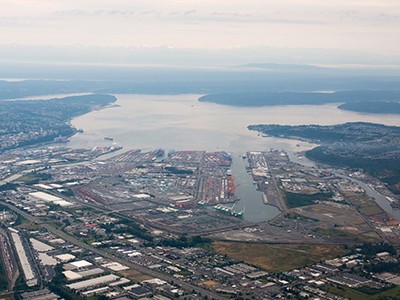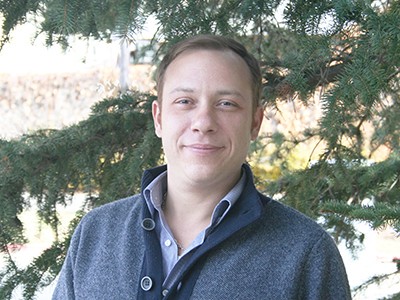Sum of Parts: USU Scientist Uses Math to Aid Environmental Restoration
A patchwork of resource management boundaries such those found in the Puget Sound area, pictured here, can make joint restoration efforts a challenge. USU researcher Jacopo Baggio reports on tools to foster collaboration. Photo by D. Coetzee.
The oft-quoted proverb, “Too many cooks spoil the broth,” is apt wisdom for describing challenges facing policy makers, public resource managers, ag producers, industry, residents and other stakeholders in attempts to jointly tackle major environmental restoration projects. The myriad of varied interests – some conflicting; some aligning – results in a confusing tangle of authority and responsibility.
“Resource management boundaries seldom align with environmental systems,” says Utah State University researcher Jacopo Baggio. “This can lead to a variety of social and ecological problems.”
But an answer to this struggle, known alternately as “scale mismatch” or “spatial misalignments,” may lie in the power of math.
With colleague Jesse Sayles of McGill University, Baggio employed analytic modeling to unravel the confusion in a case study of estuary watershed restoration efforts in Washington’s Puget Sound. The team reports development of quantitative tools to foster collaboration and efficient coordination of resources in the Feb. 20, 2017, Early Edition of the Proceedings of the National Academy of Sciences. Their work is supported by the National Science Foundation.
Mapping and analyzing social networks among resource management organizations can identify how divergent groups work together and ease conflicts at local, state, regional and national levels, he says.
“The challenges facing Puget Sound, and areas around the world with similar challenges, are often the result of many small impacts,” Sayles says. “Not all stakeholders get the direct burden of a particular ecosystem problem, nor do all receive equal benefits. Yet everyone affects the system.”
Baggio and Sayles’ approach, using social-ecological network analysis, illuminates network connections among stakeholders, revealing strengths and weaknesses in communication and collaboration.
“Integrating network analysis results with ecological habitat data provides a social-environmental restoration planning perspective,” Sayles says. “This research can help policy makers allocate resources. It’s a fundamental step toward addressing scale mismatch, while considering multi-level governance.”
Related Links
“USU-led Interdisciplinary Approach Reveals Key to Community Viability,” Utah State Today
USU Department of Environment and Society
USU Ecology
USU Quinney College of Natural Resources
Contact: Jacopo Baggio, 435-797-5747, jacopo.baggio@usu.edu
Writer: Mary-Ann Muffoletto, 435-797-3517, maryann.muffoletto@usu.edu
A social-ecological systems modeler, Jacopo Baggio of USU's Department of Environment and Society and the USU Ecology Center, reports on developments to support efficient coordination of resources in the Feb. 20, 2017, 'Early Edition’ of PNAS.
TOPICS
Research 877stories Environment 263stories Ecology 173stories Mathematics 44stories Restoration 36storiesComments and questions regarding this article may be directed to the contact person listed on this page.








